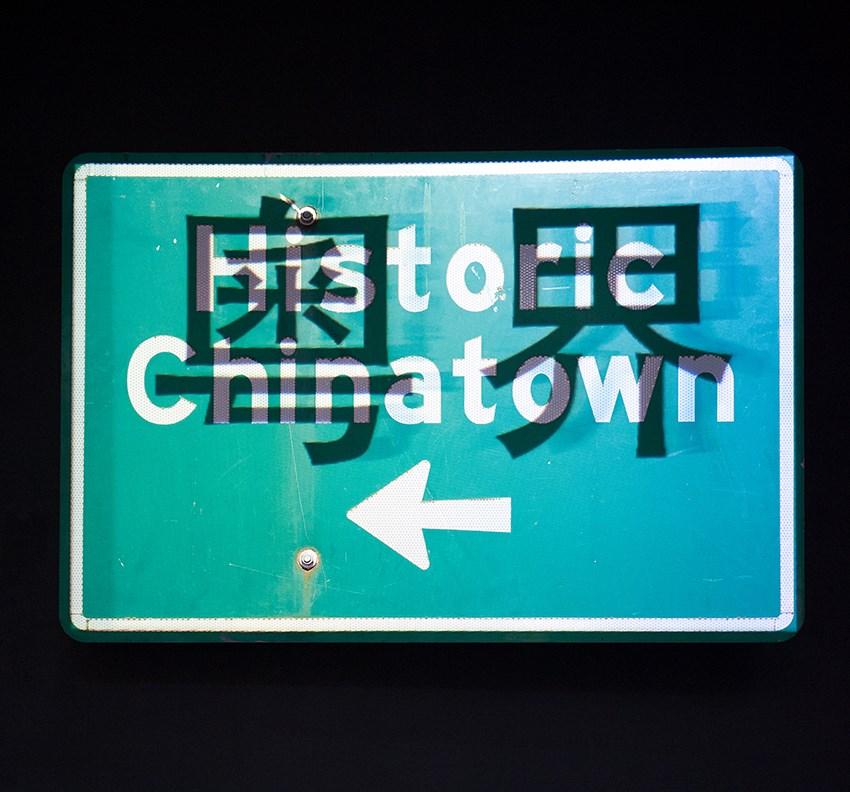Every weekend of her childhood, Claudia Li’s grandmother would bundle her onto a bus as they made the trip in from their suburban family home to Vancouver’s Chinatown.
“My grandma would come in to Chinatown to buy groceries, force me to watch her play mahjong with her friends, and then go home to make a ton of food,” she laughs.
Their trips would also take them to Newtown Bakery to buy steamed buns, or to visit her aunt in her travel agency.
“Even though I didn’t grow up here, a lot of how I identify myself lies within Chinatown,” Li explains.
For most people, that Chinatown no longer exists. Li, like many people who experienced the chaotic brilliance of Chinatown in its decades-long heyday, are now struggling to keep it alive.
Today, Chinatown is beset on all sides, steadily encroached upon by sky-high condominiums full of young urbanites that don’t speak Cantonese. Long-established businesses in the 11-block area are closing due to competition with Richmond and a lack of foot traffic, while the aging population that relies heavily upon the services they provide are left wanting. Meanwhile, warring social interests threaten to turn the neighbourhood into an extension of the Downtown Eastside, as the local language politics play out most tellingly in silence.
It’s not hard to tell why Chinatown is what Chinatown is talking about most.
This is not the first time Chinatown, one of the oldest and largest Chinese neighbourhoods in North America, has been under threat, however.
During the race riots of 1907, an anti-immigration rally exploded into violence and vandalism in both Chinatown and neighbouring Japantown. The streetscape was then nearly obliterated by the proposed “Chinatown/Gastown” Freeway Connector of the 1960s and simultaneous redevelopment proposals. In the mid-’70s, city and federal health inspectors started closing Chinese barbecue shops, sparking protests and a major economic and cultural crisis at the time. And, through it all, the cries for development and shouts for it to stop have remained deafening.
But as the neighbourhood shifts from a small self-sustaining economy to a central city hub, the neighbourhood has never faced so much change so fast.
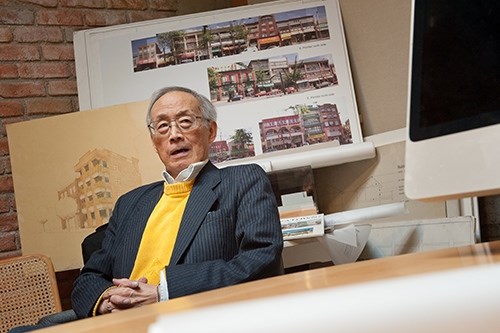
The development dilemma
Joe Wai has been helping to preserve and shape Chinatown for more than 40 years. Best known as the architect of the Dr. Sun Yat-Sen Classical Chinese Gardens, located strategically in what was the proposed path of the infamous freeway, his guiding hand can be seen throughout the neighbourhood, from the Chinatown Millennium Gate to the Chinatown Parkade.
As a student at UBC in the ‘60s, Wai remembers the allure of Chinatown.
“There were so many restaurant variations up and down Pender and Keefer Streets,” he recalls. “Even the alleys – the green door, red door, orange door, grey door – they were the workers’ places, truckers’ places, but most everybody was students because it was cheap and quite genuine.”
To kick-start revitalization efforts, the City of Vancouver looked to density and new development, and began a Historic Area Height Review in 2008. At the end of that process, building heights in the historic core increased 10 feet to a new limit of 75 feet, and to 120 and 150 feet in parts of Chinatown South.
Wai was among the 11 major Chinatown stakeholders who initially endorsed the report, but he says he is having second thoughts after the promised Community Amenity Contributions (which developers must pay for increased density) earmarked for seniors’ and low-income housing failed to yield the desired results. To date, only 22 units of seniors’ housing have materialized.
When the new buildings started to go up in 2011 and 2012, Wai says the Chinatown community became uneasy. To ensure the character of their neighbourhood was preserved, the Chinatown Historical Area Planning Committee brought together members of the community to create a document that would define what they thought Chinatown should be, from heritage signage to building setbacks to the human scale of the streets.
“City planning eventually adopted it,” says Wai. “But it doesn’t seem to have the teeth.”
Three years later, this struggle for identity is coming to a head with 105 Keefer. Depending on who you talk to within the community, the planned 13-story, 137-unit condo development ranges from a “bad precedent” to a “death knell for Chinatown”.
According to Wai, the development takes none of the aesthetic concerns, nor need for seniors housing into consideration. For others, with its historically significant location across from the Chinese Cultural Centre and Sun Yat-Sen Garden, 105 Keefer represents the continual “hollowing out” of Chinatown, leaving the area devoid of the cultural fabric it requires to survive.
“It’s the line in the sand,” says Wai. “We’ve said we’re not moving. If city planning or city council wants to do this, you’ll get protests from all of us.”
Unless, Wai adds, the City starts listening to Chinatown residents and acting on their concerns.
But where Wai and his contingent at least remain open to careful development, there exists an equally vocal group hoping to halt it completely.
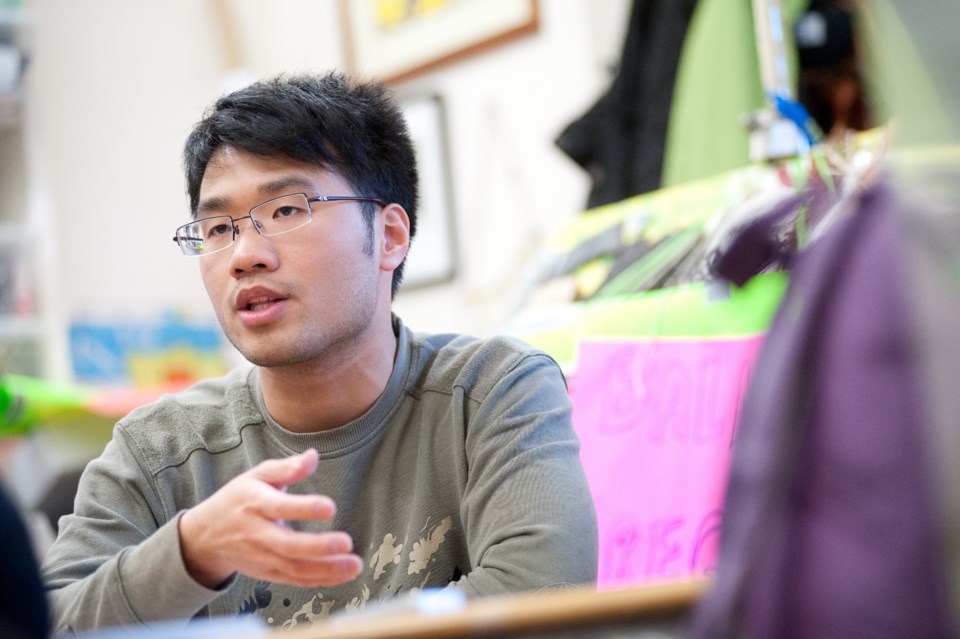
The Carnegie Community Action Project (CCAP), led by social activist King-mon Chan, is currently gathering signatures for a moratorium on any further development of Chinatown.
“There’s a lot going on in revitalization,” the 23-year-old says from his office on the second floor of the Carnegie Centre at Main and Hastings, “and right now we’re focusing on what I call ‘protective policies’ in the sense of asking, with this petition, for a temporary moratorium. Because we feel we’re seeing Chinatown being eroded.”
The Downtown Eastside interests CCAP represents are occasionally at odds with the more traditional Chinatown stakeholders, but Chan sees them as having a common goal. As he recounts conversations with the 1,000 concerned local residents who have contributed their signatures to his petition, Chan radiates worry.
“If you don’t have any protection and you keep talking, then everything’s gone and by that time it’s just too late.”
In his view, Chinatown is a living memorial to the very heart of the Chinese-Canadian sacrifice.
“People say Richmond is the new Chinatown, well… Richmond is not Chinatown,” Chan says passionately. “Chinatown’s history comes from all the racist policies that formed that community, those businesses – that’s where things were birthed out of. And it’s not respectful to just change that community and destroy it for profits. Moving into the neighborhood you need to be careful that you don’t abuse that.”
Meanwhile, he says he sees evidence of that abuse all around him.
“[Residents] don’t feel this is Chinatown anymore; what I commonly hear is it’s ‘Western Town’. It’s being advertised as the new Yaletown, the new Gastown, and then the character is more resembling that.”
But Kevin McNaney, assistant director of planning for the City of Vancouver, says a moratorium is not an option.
McNaney has been working on Chinatown revitalization issues for more than half a decade, and says the City is listening.
“There’s certainly voices out there who would like to see development stopped, but I always have to remind people, we just put these policies in place, and there was a huge demand from the Chinatown community for development to proceed,” he explains.
According to McNaney, there are 550 units currently underway, or approved, in Chinatown.
“That’s right on target for what the plan says,” says McNaney. “We expected 600 new housing units in three to five years.
“I think part of [the problem],” he adds, “is it happened quite quickly. It’s a pace of change. But people need to also understand that there are very few development sites left, so the bulk of the development that has occurred is occurring now, and it will slow down.”
In the meantime, McNaney says greater density in the neighbourhood will help support the local businesses there.
“When we did our business survey back in 2012, over 65 per cent of the businesses reported decreasing revenues,” he says. “The merchants are struggling and they needed more customers. These projects are very strategic, as they are outside the heritage area, but they brought some more life to the district and supported those heritage, affordable housing, and cultural objectives.”
The City has also been instrumental in restoring many of the culturally significant buildings in the neighbourhood, the ones most closely linked with the look and feel of Chinatown.
“There are about 12 society buildings in Chinatown that are pretty fundamental to the designation of the area as a national historic site,” says McNaney. “So some of the money from those development sites, through the Community Amenity Contribution at Main and Keefer went towards this program. The City put in some capital funding and now that program is underway to support critical upgrades to those buildings, which also have some pretty critical housing units in there as well.”
McNaney also points out that the revitalization plan has also brought in $500,000 in public improvements – refurbishing the dragon lights, restoring some of Chinatown’s iconic neon signs, and making facade upgrades, for example.
“I think for the first time you’re starting to see new businesses open in Chinatown and more diverse businesses, not just the same dried goods shops or tourist shops that repeat themselves all over the area,” he says of the plan’s success so far. “I think you’re starting to see a lot of interest across the city in the future of Chinatown, which I think is a good sign for revitalization. There’s still a lot of work to be done, but we have a plan in place and a very clear plan to move forward.”
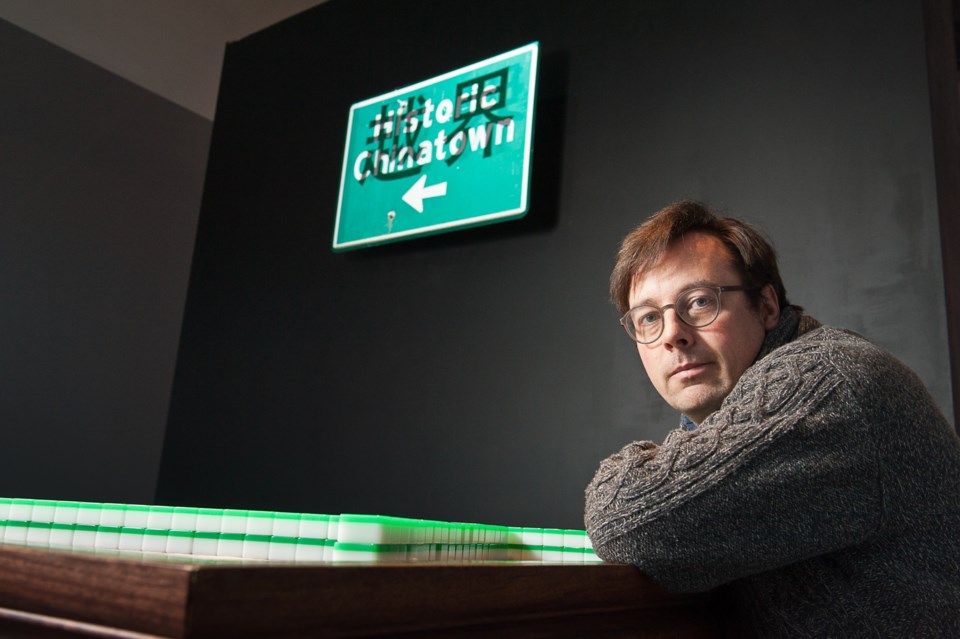
Do you speak what I speak
Tyler Russell has served as executive director and curator for the Vancouver International Centre for Contemporary Asian Art (Centre A) for the past year. But when he took over the gallery, located in the heart of Chinatown at 229 East Georgia, he says there wasn’t even a welcome sign on the front in Cantonese.
Russell says he met resistance to the idea of putting Chinese signage on the gallery from his board of directors. But when a local woman came in to raise a complaint about its absence and offer suggestions for what it should say, he had an idea.
“I have curatorial autonomy,” he explains with a wry smile, “so I hired her as an artist for our next exhibition and we put the signage up that way.”
The gallery’s latest exhibition, Transgression/Cantosphere, is similarly disruptive to the status quo. A powerful reaction to a language under threat, artists Hong Kong Exile, Howie Tsui, and linguist Zoe Lam relate the efforts to standardize the many languages of China with the “ominous” signs of Mandarinisation that have hovered over Chinatown in recent years.
One of Canada’s most deeply-rooted Cantonese-speaking communities, the very sounds of Chinatown are at risk of being displaced by the incoming Western and Mandarin classes.
“When you say that Cantonese is under threat,” says Dr. Ross King, head of the Department of Asian Studies at UBC, “it’s not the same thing as saying Musqueam is under threat, where you can count the number of speakers on a couple of hands. With Cantonese you’ve got estimates everywhere from 70-100 million speakers around the world. But it is true that certain kinds of administrative steps, rules and regulations, legislation, policies in schools and in the media in Mainland China have apparently started to have some bite. And there’s understandably a lot of anxiety about that.”
As more Mandarin speakers move to places like Vancouver, and Cantonese continues to be squeezed out of its own backyard, there are also bound to be flare ups of regional animosity.
“There is a continuing stream of newcomers coming in,” says King. “And speakers of Mandarin from other parts of China can sometimes be very imperious when dealing with regional languages from other parts of China.”
King says a recent ”Ni Hao” billboard advertising the new condominiums at 188 Keefer was seen as a slap in the face to the local Cantonese community, as “ni hao” is Mandarin for “hello”.
But even if China continues its slow assault on Cantonese, King says the language should be more than just a symbolic priority for preservation.
“In the case of a Chinatown like Vancouver,” he says, “which is one of the oldest Chinatowns in North America – where until very recently Cantonese was the language of our Chinatown – making sure Cantonese has some kind of status, making sure that it is studied academically, and that would-be learners do have an opportunity to learn it is all really important. It has more than just a symbolic meaning to the people of Vancouver.”
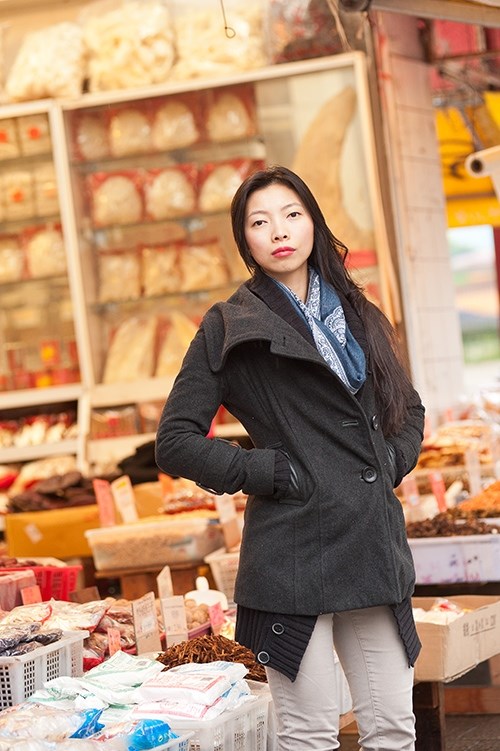
Bridging the gap
Claudia Li is one of a growing number of young activists lending their voice to Chinatown. In 2009, she started her first non-profit initiative, Shark Truth, which promoted sustainable seafood and “fin free” banquets within the Chinese community. Using community outreach, Shark Truth has prevented more than 80,000 bowls of shark fin soup being served, and saved approximately 8,000 sharks.
That led her to start hua foundation along with two other colleagues, to more broadly strengthen the Hua or ethnic Chinese community’s connections with culture, heritage and environmental sustainability.
For example, one of hua foundation’s newest initiatives, The Choi Project, was sparked by Li’s struggle to find locally-produced or organic Chinese vegetables with labels. She could easily find organic Western produce at places like Whole Foods, or unmarked Chinese vegetables in Chinatown, but nothing in-between.
“We wanted our daikon, pea shoots and choy sum to be BC-grown and pesticide-free,” the 28-year-old explains, “but we didn’t know where to find it.”
Now, participating Chinatown supermarkets distribute seasonal produce guides, post bilingual translations of produce information (helpful for both Western shoppers and Chinese-Canadians who can’t speak Cantonese), and the foundation puts on cooking workshops to teach people how to use Chinese produce. In doing so, the foundation is helping to strengthen Chinatown’s position as a more accessible shopping destination.
But Li’s heart still aches for the vibrant Chinatown she remembers from her childhood – a Chinatown immortalized in its waning days by the documentary Everything Will Be, which premiered at the Vancouver International Film Festival last year (and is streaming for free Feb. 26 and 27 here).
Over the course of the 85-minute film, Julia Kwan’s camera lovingly follows Chinese business owners, 90-year-old newspaper vendors, impassive sidewalk knitters, doomed artists, chatty security guards and even condo marketer Bob Rennie (owner of Chinatown’s oldest building) as they go about their every day. In a number of cases, the camera witnesses the end of their businesses, providing a nuanced eulogy to a Chinatown that is never coming back.
“It broke my heart,” recalls Li, “because they portrayed these Chinese seniors who live and work in Chinatown, and this is their whole life, this is who they are, where their community is, where they get their services,” she says. “But then I feel super hopeful when I meet a bunch of other young people who watched the same documentary and are just as upset and motivated as I am.”
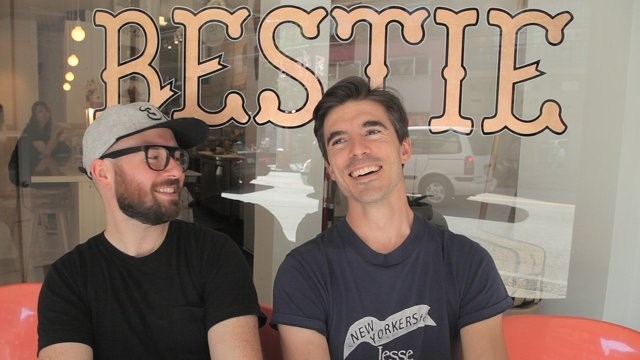
The price of doing business
As rents stay attractively low and Chinese-owned businesses close – either as the owners retire or competition with Richmond and lack of foot traffic are felt at the till – there is no policy in place dictating what businesses can take over those spaces.
Unlike the Pidgin Restaurant protests nearby in Gastown, non-Chinese businesses that have opened in Chinatown – such as Matchstick Coffee, El Kartel Clothing, or The Pie Shoppe – are quietly accepted into the neighbourhood (although some others, like the marijuana dispensaries, are not).
For Chinatown Merchants Association director Henry Tom, the hip-ening of Chinatown is helping. “Active businesses of most kinds are better than abandoned streets and empty storefronts. They do contribute to the overall revitalization.”
The City of Vancouver’s 2012 Chinatown revitalization strategy identified 58 per cent of Chinatown’s client base are local residents, and that there was a need for economic diversity provided by new businesses. But the jury is still out on whether the subsequent influx of non-Chinese businesses is helping to sustain Chinatown or alter it irreparably.
“I think we’re all holding our breath to see what the impact is going to be. If it’s bad, how to mitigate that,” says Tom. “If it’s good, how do we encourage more?”
As you navigate the boardrooms and back rooms of Chinatown, it becomes quickly apparent which new businesses are doing a better job of reaching out to the community then others. Some receive good-natured ribbing within the Chinese community; in private, others are ridiculed more pointedly for their lack of sensitivity, not only to the neighbourhood’s native languages but the needs of the community they serve. But, so far, all seem to have earned the thick skin of success.
“It’s been beyond our wildest dreams,” says Dane Brown, co-owner of Bestie, a 25-seat German sausage restaurant on Pender. “We made some projections before we opened, how, if we sell this much we’ll be able to stay open, and if we sell this much we’ll be able hire some people, and if we sell this much, well, that will be amazing.
“We haven’t have a month that was below our ‘amazing’ projection,” he confides, “so we kind of count our blessings every day.”
Before opening the restaurant, Brown and his business partner Clinton McDougall had lived in neighbourhoods around Chinatown for almost 10 years.
“At the time we signed our lease it was in pretty rough shape on Pender Street – there were a lot of vacancies. But it sort of had this messy vitality. I don’t know if that’s the right term for it, but there’s a good vibe. Even though it’s run-down and it’s close to the Downtown Eastside, there’s life there.”
Since opening in June 2013, the first-time entrepreneurs say they have started to make connections within the surrounding, tight-knit Chinese community. They preserved what signage of the original Chinese bookshop they found; McDougall took a course in Mandarin and is a member-at-large of the Chinatown Historic Area Planning Committee; they buy their tea from The Tea Shop next door; and participate each year in the Chinese New Year celebrations. Even routine gestures such as keeping their walkway neatly swept, Brown says, are appreciated by the older businesses nearby.
“When we first opened, people would kind of stop and look in and look confused,” Brown recalls, “but we’d always wave at them and say hi and welcome them in. Now we’ve got a really great contingent of older Chinese fellows who like to come in and sit at the bar and have a big beer and a lunch of currywurst once or twice a week,” he continues. “I feel like we’ve been completely accepted as part of the neighbourhood.”
Just few blocks away on Hastings, mother-daughter duo Grace and Rachel Chen are fast becoming the example of what many Chinatown activists would like to see other business owners emulate.
Grace was a well-known face within the Save On Meats community, and Rachel is the owner of the beloved and all-welcoming Perks Cafe at 39 East Pender in Chinatown.
When the Ovaltine Cafe went up for sale last year, many were afraid that the 72-year-old DTES institution, which has a continuous history of Chinese-Canadian ownership, would be closed to make way for condos or another upscale coffee shop. The two women instead bought the diner and have been slowly updating the tried and true menu and original interior over the last six months, while honouring the business’ community roots.
To help achieve this balance and to manage the space, they have enlisted Corben Winfield of Six Acres and the High Five grilled cheese window in Gastown, and Theo Lloyd-Kohls of Dunlevy Snack Bar.
For Lloyd-Kohls, it’s more than just doing a friend a favour.
“I moved to Vancouver about six years ago,” he says, “and I’ve been coming [to the cafe] since then. It’s an institution. It’s got a lot of historical importance, and the interior – I don’t know if there’s any older open diners in Vancouver like this place.”
The restaurant will continue to be a spot for low-income residents to gather and grab a bite, but the new management is also taking advantage of an underutilized liquor license and adding later hours to entice the musical loving, late-night crowd from the Rickshaw Theatre across the street.
“It’s hard in Vancouver to run a restaurant, and to run this one, where it is, and stay afloat is hard,” says Lloyd-Kohls, “but keeping this place alive is just one way the rest of the neighbourhood can keep its culture and integrity and heritage and not change too far down one path.”
Editor's note: An earlier version of this story incorrectly stated that the owners of Bestie had lived in Chinatown. It has been corrected.
